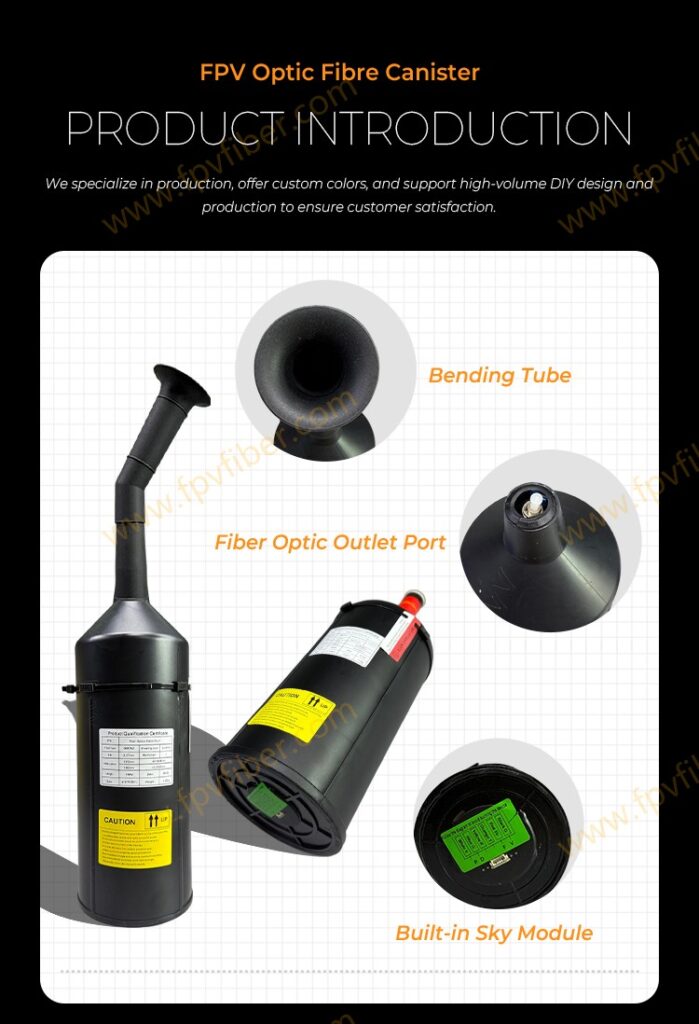- Prevent Fiber Breakage
When the fiber optic cable release from the canister, a direct 90° bend results in a small bending radius, easily causing micro-bending or breakage.
Adding a bend allows the fiber to smoothly change direction along the bend, increasing the bending radius and significantly reducing stress concentration.
- Prevent Fiber Scratching or Abrasion
The fiber outlet point usually has plastic edges; direct friction between the fiber and these edges can damage the sheath.
The smooth inner wall of the bend protects the fiber sheath from abrasion.
- Control Fiber Outlet Direction
The bend allows for more control over the fiber outlet direction, facilitating connections to drones or ground modules.
It prevents the fiber from swinging erratically, leading to tangling or knots.
- Improve Cable Deployment and Retraction Stability
When the fiber is rotated and deployed within the canister, the bend acts as a guide, maintaining a stable path at the outlet and inlet, preventing tangling or fiber skipping.
The bend is typically:
A curved plastic tube (about 120°)
One end is inserted into the fiber optic canister’s outlet tube, and the other end is used to fix the outlet direction;
The inner diameter is larger than the fiber optic outer diameter for easy sliding.
